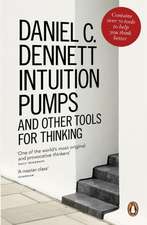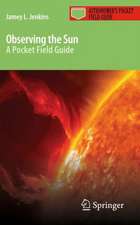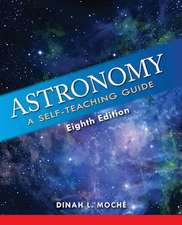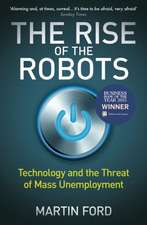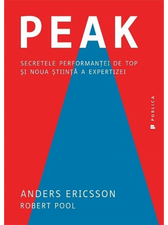Dark Nebulae, Dark Lanes, and Dust Belts: The Patrick Moore Practical Astronomy Series
Autor Antony Cookeen Limba Engleză Paperback – 28 ian 2012
Dark Nebulae, Dark Lanes, and Dust Lanes is a great source of practical information for observers. Such voids may be successfully observed using conventional observing methods, but they are often far better seen with technologies such as light-pollution filters, CCD video cameras, and image intensifiers. This book explains the optimal ways to observe each object in detail.
Din seria The Patrick Moore Practical Astronomy Series
-
 Preț: 258.21 lei
Preț: 258.21 lei -
 Preț: 164.94 lei
Preț: 164.94 lei -
 Preț: 324.21 lei
Preț: 324.21 lei -
 Preț: 255.10 lei
Preț: 255.10 lei - 8%
 Preț: 581.98 lei
Preț: 581.98 lei -
 Preț: 159.16 lei
Preț: 159.16 lei -
 Preț: 282.38 lei
Preț: 282.38 lei -
 Preț: 308.55 lei
Preț: 308.55 lei -
 Preț: 309.87 lei
Preț: 309.87 lei -
 Preț: 332.98 lei
Preț: 332.98 lei -
 Preț: 276.91 lei
Preț: 276.91 lei -
 Preț: 243.94 lei
Preț: 243.94 lei -
 Preț: 183.40 lei
Preț: 183.40 lei -
 Preț: 378.09 lei
Preț: 378.09 lei -
 Preț: 302.20 lei
Preț: 302.20 lei -
 Preț: 210.01 lei
Preț: 210.01 lei -
 Preț: 212.68 lei
Preț: 212.68 lei -
 Preț: 271.39 lei
Preț: 271.39 lei -
 Preț: 252.91 lei
Preț: 252.91 lei -
 Preț: 281.95 lei
Preț: 281.95 lei -
 Preț: 289.85 lei
Preț: 289.85 lei -
 Preț: 218.84 lei
Preț: 218.84 lei -
 Preț: 282.38 lei
Preț: 282.38 lei -
 Preț: 128.86 lei
Preț: 128.86 lei -
 Preț: 301.10 lei
Preț: 301.10 lei -
 Preț: 204.78 lei
Preț: 204.78 lei -
 Preț: 307.44 lei
Preț: 307.44 lei -
 Preț: 303.07 lei
Preț: 303.07 lei -
 Preț: 258.83 lei
Preț: 258.83 lei -
 Preț: 155.25 lei
Preț: 155.25 lei -
 Preț: 193.97 lei
Preț: 193.97 lei -
 Preț: 208.26 lei
Preț: 208.26 lei -
 Preț: 279.09 lei
Preț: 279.09 lei -
 Preț: 303.51 lei
Preț: 303.51 lei -
 Preț: 277.54 lei
Preț: 277.54 lei -
 Preț: 208.51 lei
Preț: 208.51 lei -
 Preț: 214.86 lei
Preț: 214.86 lei -
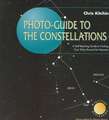 Preț: 304.58 lei
Preț: 304.58 lei -
 Preț: 220.57 lei
Preț: 220.57 lei -
 Preț: 157.32 lei
Preț: 157.32 lei -
 Preț: 275.98 lei
Preț: 275.98 lei -
 Preț: 288.98 lei
Preț: 288.98 lei -
 Preț: 261.49 lei
Preț: 261.49 lei -
 Preț: 279.09 lei
Preț: 279.09 lei -
 Preț: 160.82 lei
Preț: 160.82 lei -
 Preț: 327.01 lei
Preț: 327.01 lei -
 Preț: 254.90 lei
Preț: 254.90 lei -
 Preț: 304.38 lei
Preț: 304.38 lei -
 Preț: 256.84 lei
Preț: 256.84 lei
Preț: 319.43 lei
Nou
Puncte Express: 479
Preț estimativ în valută:
61.12€ • 65.36$ • 50.96£
61.12€ • 65.36$ • 50.96£
Carte tipărită la comandă
Livrare economică 17 aprilie-01 mai
Preluare comenzi: 021 569.72.76
Specificații
ISBN-13: 9781461411857
ISBN-10: 1461411858
Pagini: 340
Ilustrații: XI, 243 p. 75 illus.
Dimensiuni: 155 x 235 x 18 mm
Greutate: 0.36 kg
Ediția:2012
Editura: Springer
Colecția Springer
Seria The Patrick Moore Practical Astronomy Series
Locul publicării:New York, NY, United States
ISBN-10: 1461411858
Pagini: 340
Ilustrații: XI, 243 p. 75 illus.
Dimensiuni: 155 x 235 x 18 mm
Greutate: 0.36 kg
Ediția:2012
Editura: Springer
Colecția Springer
Seria The Patrick Moore Practical Astronomy Series
Locul publicării:New York, NY, United States
Public țintă
Popular/generalCuprins
The Nature of Unlit Gases and Dust, and Their Place in the Universe.- Defining Our Viewing Parameters and Methods.- Dark Nebulae.- Dark and Dusty Regions in Bright Diffuse Nebulae.- Dark Lanes in Star Clusters.- Dust Belts and Dark Features in Galaxies.- Dark Regions in Planetary Nebulae.- A Few Last Words.
Recenzii
From the reviews:
“In Dark Nebulae, Dark Lanes, and Dust Belts, Cooke describes a neglected area in the deep-sky observers’ canon, the dark nebulae, and in addition he includes almost anything that may be perceived as dark in relation to deep-sky objects. … The most likely beneficiaries of this book may well be the keen and more-advanced visual deep-sky observer who loves to chase features such as dark ‘lanes’ in globular star clusters and the dusty areas of spiral galaxies … .” (Nick Hewitt, The Observatory, Vol. 132 (1231), December, 2012)
“It is clear that Cooke … has a passion for visually observing many dark areas of the universe. He clearly articulates this passion in his book and provides a wealth of observing challenges for observers with large amateur instruments. … this reviewer, considers the scope of the book unique, so it would not have any competition in the campus library. Most of the black-and-white figures support the text. … Overall, a useful resource. Summing Up: Recommended. General audiences and lower-and upper-division undergraduates.” (J. R. Kraus, Choice, Vol. 50 (1), September, 2012)
“In Dark Nebulae, Dark Lanes, and Dust Belts, Cooke describes a neglected area in the deep-sky observers’ canon, the dark nebulae, and in addition he includes almost anything that may be perceived as dark in relation to deep-sky objects. … The most likely beneficiaries of this book may well be the keen and more-advanced visual deep-sky observer who loves to chase features such as dark ‘lanes’ in globular star clusters and the dusty areas of spiral galaxies … .” (Nick Hewitt, The Observatory, Vol. 132 (1231), December, 2012)
“It is clear that Cooke … has a passion for visually observing many dark areas of the universe. He clearly articulates this passion in his book and provides a wealth of observing challenges for observers with large amateur instruments. … this reviewer, considers the scope of the book unique, so it would not have any competition in the campus library. Most of the black-and-white figures support the text. … Overall, a useful resource. Summing Up: Recommended. General audiences and lower-and upper-division undergraduates.” (J. R. Kraus, Choice, Vol. 50 (1), September, 2012)
Notă biografică
Antony Cooke's passion for both astronomy and music was clear from an early age, although it was music that ultimately claimed his career. As solo cellist he has played and recorded worldwide. He was also a professor of music at Northwestern University in Chicago. Presently, he is a prominent Hollywood studio musician, as well as a composer for prime time television. However, it has often been said that science and music go hand in hang. With applied and theoretical astronomy never being far behind, he has pursued it as a serious avocation.
As an observer always looking for ways to improve his experience at the eyepiece, Cooke has constructed many telescopes over the years. Increasing apertures were always the hallmark of his often-quirky designs. Finding that the 18-inch aperture of his present telescope was still insufficient to deliver the kind of performance he had in mind, he experimented with newer technologies to bring these elusive goals ever closer. Successful viewing of dark objects requires great contrast. In this respect, some of the newer equipment has proven to be invaluable, enabling dramatic viewing of many dark objects and features in real time and without the need of CCD imaging.
As an author of astronomy books, Cooke also has written Visual Astronomy in the Suburbs (Springer, 2003), Visual Astronomy under Dark Skies (Springer, 2005), and Make Time for the Stars (Springer, 2009). With Dark Nebulae, Dark Lanes and Dust Belts, his astronomical writings continue.
As an observer always looking for ways to improve his experience at the eyepiece, Cooke has constructed many telescopes over the years. Increasing apertures were always the hallmark of his often-quirky designs. Finding that the 18-inch aperture of his present telescope was still insufficient to deliver the kind of performance he had in mind, he experimented with newer technologies to bring these elusive goals ever closer. Successful viewing of dark objects requires great contrast. In this respect, some of the newer equipment has proven to be invaluable, enabling dramatic viewing of many dark objects and features in real time and without the need of CCD imaging.
As an author of astronomy books, Cooke also has written Visual Astronomy in the Suburbs (Springer, 2003), Visual Astronomy under Dark Skies (Springer, 2005), and Make Time for the Stars (Springer, 2009). With Dark Nebulae, Dark Lanes and Dust Belts, his astronomical writings continue.
Textul de pe ultima copertă
As probably the only book of its type, this work is aimed at the observer who wants to spend time with something less conventional than the usual fare. Because we usually see objects in space by means of illumination of one kind or another, it has become routine to see them only in these terms. However, part of almost everything that we see is the defining dimension of dark shading, or even the complete obscuration of entire regions in space. Thus this book is focused on everything dark in space: those dark voids in the stellar fabric that mystified astronomers of old; the dark lanes reported in many star clusters; the magical dust belts or dusty regions that have given so many galaxies their identities; the great swirling 'folds' that we associate with bright nebulae; the small dark feature detectable even in some planetary nebulae; and more.
Many observers pay scant attention to dark objects and details. Perhaps they are insufficiently aware of them or of the viewing potential they hold, but also it may be because of the various viewing challenges that dark objects pose. Discussions on viewing methods and the best equipment for a wide cross section of these objects are included, along with many detailed descriptions. The book contains virtually every dark object worth the observer's attention.
Whether viewing live through the eyepiece or indirectly through CCD or other imaging techniques, this unique compendium and discussion of all things dark in space will hopefully prove compelling and rewarding.
Many observers pay scant attention to dark objects and details. Perhaps they are insufficiently aware of them or of the viewing potential they hold, but also it may be because of the various viewing challenges that dark objects pose. Discussions on viewing methods and the best equipment for a wide cross section of these objects are included, along with many detailed descriptions. The book contains virtually every dark object worth the observer's attention.
Whether viewing live through the eyepiece or indirectly through CCD or other imaging techniques, this unique compendium and discussion of all things dark in space will hopefully prove compelling and rewarding.
Caracteristici
Serves as the only resource for amateur observers who specifically set out to observe dark features in the deep sky Offers detailed descriptions of how to study dark objects, including recommendations for choosing commercial equipment Shows how practical observations of dark features can be made from suburban (light-polluted) locations Contains numerous helpful individual object descriptions and illustrations Includes supplementary material: sn.pub/extras




